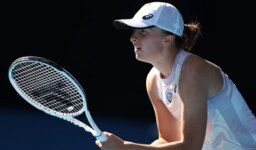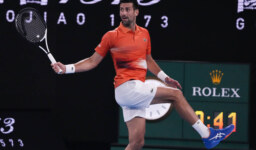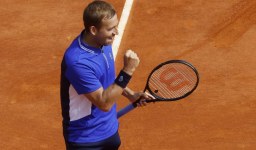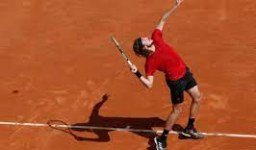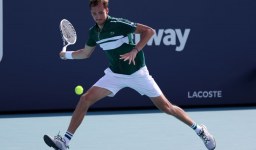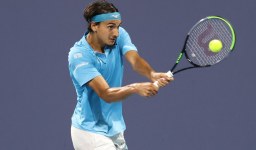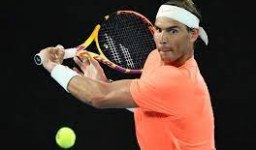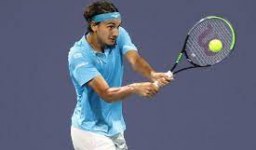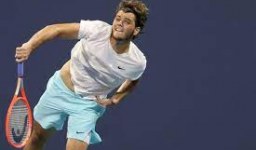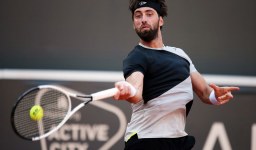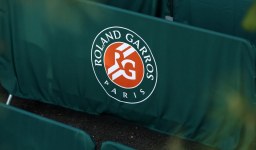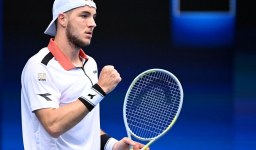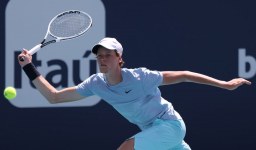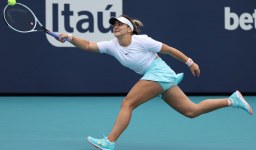One of the most significant players to have ever played the game, Roger Federer decided to put up his tennis racquet last year at the age of 41.
Between 2003 and 2018, Federer won 20 grand slam singles titles and spent 310 weeks at the top of the men’s rankings, demonstrating his dominance on the court.
Outside of the court, the Swiss star displayed exceptional marketability and amassed a huge portfolio of sponsors, making him one of the highest-paid athletes in the world. Despite not competing in any ATP Tour events last year, Forbes projected that he earned pre-tax gross earnings of $90.7 million.
Aspects of Federer’s life and career are examined in the new book, “The Roger Federer Effect,” including his marketability and his long-standing sponsorship agreement with sportswear giant Nike.
According to Simon Cambers, the book’s co-author, Writing the book, we learned how huge the impact Federer had, not just inside tennis, but outside it, too.
The former tennis director at Nike, Mike Nakajima, discusses why Federer and Nike were such a good fit in the excerpt from “The Roger Federer Effect” that is included below. He claims that Nike could have done for Federer what it achieved for Michael Jordan.
During Wimbledon, the major tennis players always rent homes nearby The All England Club to host meetings and welcome their athletes.
The tennis director at Nike for 29 years, Mike Nakajima, remarked, There, athletes have a safe haven. They are welcome to stay and no one will request photos.
When he was younger, Roger Federer like to visit the Nike home, prepare himself a ham and cheese sandwich, and watch Wimbledon on television. As fate would have it, the Federers and the Nike employees on Arthur Road, across from Wimbledon Park and The All England Club, were practically neighbors in 2016.
“We had an indoor pool and we also had a tennis court in the back. It was a really bad one,” said Nakajima. “We ended up resurfacing the court because we wanted to stay at that house, we put the Nike swoosh on, and everything was pretty cool.”
During the Championships, the Federers’ second residence was the Nike house. With the children, Roger played tennis while Mirka (Federer’s wife) and one of the nannies went swimming.
I could see the tennis court from my bedroom, remarked Nakajima. So I observed Roger giving his children balls. The finest tennis player, Roger Federer, was playing on one of the worst tennis courts, which was almost embarrassing to see. He then revealed to me that one of the boys had asked him to leave the court so that his brother and he could play. While his young boys engaged in play, dad stood off to the side. Hey, Rog, when was the last time you were expelled from a court? I questioned him. He merely grinned.
At Nike, John McEnroe, Pete Sampras, Andre Agassi, Serena Williams, Maria Sharapova, Roger Federer, and Rafael Nadal were just a few of the famous people Nakajima worked with. Even as Williams’ assistant while shopping, he was there (not his field of expertise). When Federer signed with Nike at age 13, he first encountered Federer.
He was a rising junior, one of the best. We brought him on, and I immediately noticed that he talks clearly and has a magnetic personality. And I observed that he was confident in his ability to succeed.
Federer’s success served as good fortune for Nike as well. Federer emerged as the next tennis phenom after Sampras and Agassi. Nakajima anticipated the 2003 US Open victory of Andy Roddick, who was signed to rival Reebok, as the beginning of the next US tennis wave. But that never happened. Roger was the catalyst for tennis in Europe to take off.
Federer’s American popularity was a goal for Nike. I’m a touch biased, Nakajima admitted. Nike, though, is the marketing master. Athletes can reach new heights once they have the massive Nike marketing machine behind them.
Roger undoubtedly would have achieved fame on his own. even if he were to represent any other company. He did, however, grow significantly as a result of Nike’s marketing apparatus. An athlete can receive fantastic exposure from Nike. You must obviously succeed on the court, which Roger did. Many people’s eyes were opened when he won a few US Opens.
The collaboration with Nike quickly reached additional regions. According to Nakajima, “Roger went into fashion after meeting Anna Wintour of Vogue and working on photo shoots for GQ.” Wimbledon, the pinnacle of tennis, served as Federer’s catwalk. He strolled there wearing a vintage cardigan, a white blazer, or long white pants. He was also wearing accessories that matched.
Federer was a trailblazer in this regard. In 2006, he wore a logo with his last name on the left breast pocket of his jacket; the following year, he wore his initials for the first time: RF. Later, logos for Andy Murray, Novak Djokovic, and Rafael Nadal were also made.
Many great sportsmen started getting signature lines since that became a negotiating tool for firms to sign them, said Nakajima. If you work with us, we’ll design your own logo and a shoe for which you’ll receive royalties. Who of the athletes will respond, No, I don’t want that?
The RF line was innovative. We used to make a baggy, US-style shirt for everyone in the globe, but then we saw how much ahead of the curve European fashion is. Much more custom fit was what Roger desired. Consequently, we got to work on the Roger Federer collection.
Mirka was heavily involved with that. Mirka was there when Roger wasn’t. We took her word for it when she said, This is what Roger enjoys. Additionally, we wanted to make sure that Roger could wear the tennis accessory we created. People went nuts over a lovely polo with a small RF logo. Our best-selling item during the US Open was the RF cap. A hat. It rose to be among the most conic pieces we have ever created.
Federer’s rival Nadal was also signed to a contract by Nike, which was fortunate. Roger and Rafa have personalities that seem quite similar. You’ll never meet two nicer guys than them. On the court, however, they were quite different. Roger moves during his performance as if he were floating on air. Rafa, on the other hand, is all about brute force in his physicality. We illustrated how much rivalry Americans enjoy. People enjoy picking a side. Rafa, vamos! Roger, allez! Additionally, we had a great time marketing those two.
According to Forbes, Federer earned over $100 million a year at his (financial) peak through endorsement deals and prize money, making him the highest-paid tennis player of all time.
How does Nakajima explain Federer’s superior marketability over his main competitors? Rafa may not want to hold the title of highest-paid endorser in the world. I doubt he gives a damn. Rafa is Rafa, he has accomplished a great deal, and I don’t believe he requires anything more. Roger made appeals to various companies, target markets, and consumer demographics because he wanted to be promoted. And his management firm did a fantastic job.
Djokovic? He might be the most successful tennis player ever, someone once said. However, a gloomy cloud is always present about him. It seems as though he is responsible for it. At the US Open (in 2020), he strikes a lineswoman and is disqualified. I guess it does happen.
